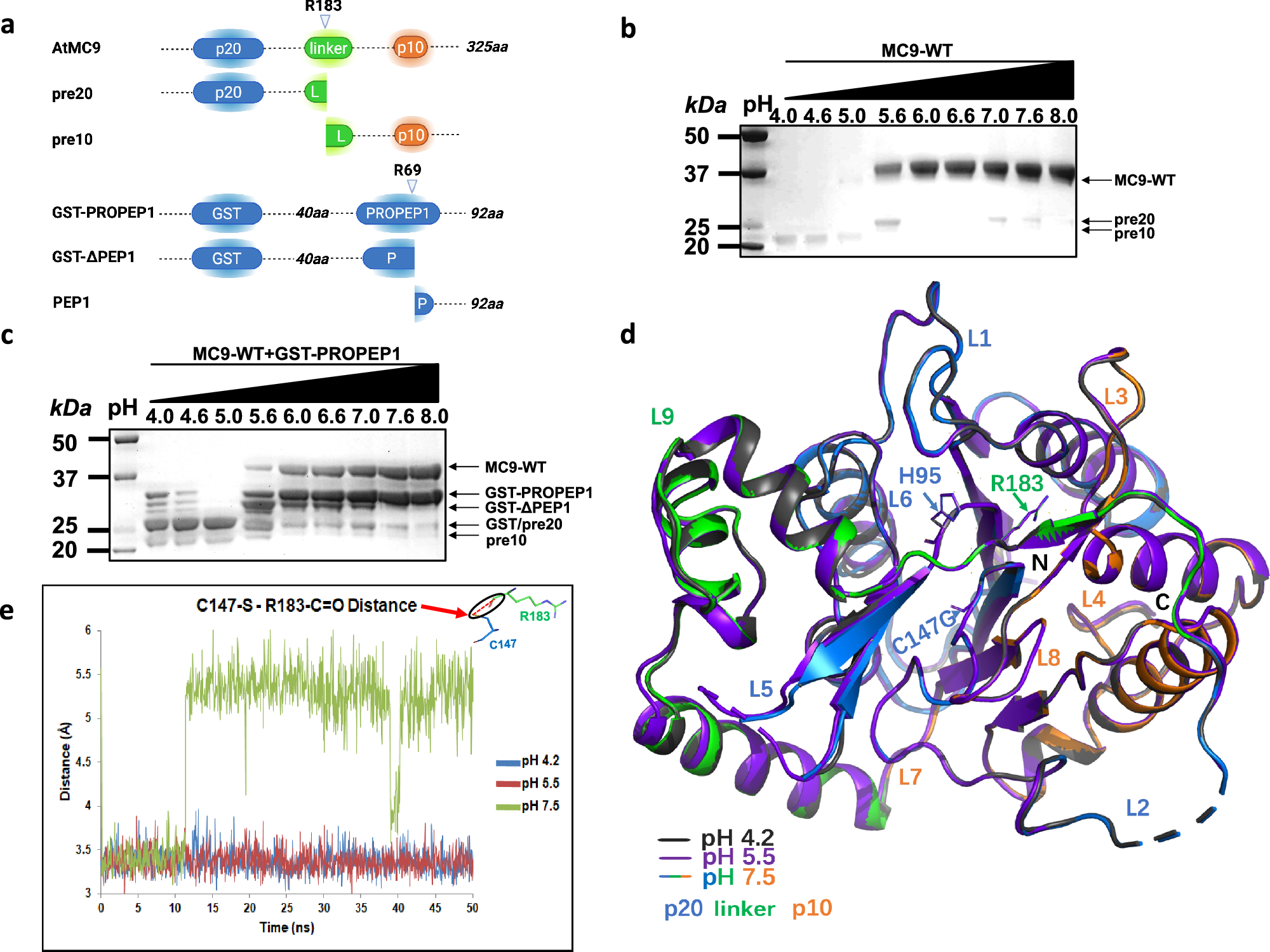2025-05-29 ラトガース大学
<関連情報>
- https://www.rutgers.edu/news/scientists-find-new-way-help-plants-fight-diseases
- https://www.nature.com/articles/s41467-025-60253-y
植物メタカスパーゼのpH依存的活性化の構造決定因子 Structural determinants for pH-dependent activation of a plant metacaspase
Haijiao Liu,Max Henderson,Zhili Pang,Qingfang Zhang,Eric Lam & Qun Liu
Nature Communications Published:29 May 2025
DOI:https://doi.org/10.1038/s41467-025-60253-y

Abstract
Arabidopsis thaliana metacaspase 9 (AtMC9) plays roles in clearing dead cells, forming xylem vessels, and regulating immunity and programmed cell death in plants. The protease’s activation is controlled by pH levels, but the exact structural mechanism behind this has not been elucidated. In this work, we report high-resolution crystal structures for AtMC9 under both active (pH 5.5 and pH 4.2) and inactive (pH 7.5) conditions. The three structures are similar except for local conformations where their hydrogen bonding interactions with solvents are mediated through the protonation of specific titratable amino acid residues’ side chains. By combining structural analysis, molecular dynamics simulations under constant pHs, and biochemical assays coupled with site-directed mutagenesis, we show that the regulation of AtMC9 activation involves multiple titratable glutamate and histidine residues across the three domains of p20, linker, and p10. Specifically, deprotonated Glu112, His193, and His208 can suppress AtMC9 proteolytic activity, while protonation of Glu255 and His307 at acidic pH may promote it. This study provides valuable insights into the pH-dependent activation of AtMC9 and could potentially lead to improving crops with enhanced immunity and controlled cell death, ultimately increasing agricultural productivity.


